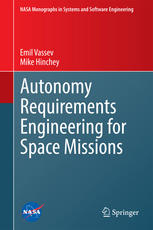

Most ebook files are in PDF format, so you can easily read them using various software such as Foxit Reader or directly on the Google Chrome browser.
Some ebook files are released by publishers in other formats such as .awz, .mobi, .epub, .fb2, etc. You may need to install specific software to read these formats on mobile/PC, such as Calibre.
Please read the tutorial at this link: https://ebookbell.com/faq
We offer FREE conversion to the popular formats you request; however, this may take some time. Therefore, right after payment, please email us, and we will try to provide the service as quickly as possible.
For some exceptional file formats or broken links (if any), please refrain from opening any disputes. Instead, email us first, and we will try to assist within a maximum of 6 hours.
EbookBell Team

4.8
64 reviewsAdvanced space exploration is performed by unmanned missions with integrated autonomy in both flight and ground systems. Risk and feasibility are major factors supporting the use of unmanned craft and the use of automation and robotic technologies where possible. Autonomy in space helps to increase the amount of science data returned from missions, perform new science, and reduce mission costs.
Elicitation and expression of autonomy requirements is one of the most significant challenges the autonomous spacecraft engineers need to overcome today. This book discusses the Autonomy Requirements Engineering (ARE) approach, intended to help software engineers properly elicit, express, verify, and validate autonomy requirements. Moreover, a comprehensive state-of-the-art of software engineering for aerospace is presented to outline the problems handled by ARE along with a proof-of-concept case study on the ESA's BepiColombo Mission demonstrating the ARE’s ability to handle autonomy requirements.